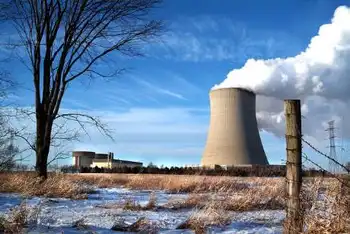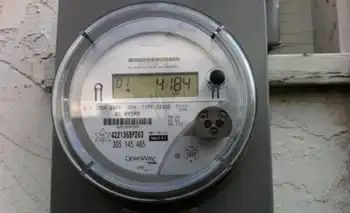Will solar energy stocks get hot again?
- Solar energy is basically energy from the sun. It is probably one of the oldest forms of energy utilized by civilization, as the Greeks and Chinese arranged their buildings toward the south to provide light and heat.
Greenhouses are a great example, converting solar light to heat, which allows production of certain plants and crops all year long. They were first used during the days of the Romans.
Solar energy is the generation of energy from the sun, usually utilizing heat engines or photovoltaics. The generation of electricity using solar energy is referred to as solar power. Solar power plants can be either concentrating solar thermal plants or huge megawatt photovoltaic plants. Current uses of photovoltaics are numerous and include all kinds of products such as battery chargers, solar powered parking meters, emergency telephones, traffic signs, and even solar panels embedded on road surfaces.
The following is a list of the pure plays and semi-pure plays in the solar energy business. Companies which have a very small portion of their business in solar were excluded (e.g. GE, PG&E). Many of these companies are very low cap and should therefore be considered very speculative:
• Akeena Solar, Inc. is a designer, installer, marketer, and seller of solar power systems for residential and small commercial customers. This Los Gatos, California based company, which was founded in 2001, utilizes grid-tied solar power systems, which are connected to the utility grid so that excess energy produced during low usage periods flows backwards through the utility's electric meter.
• Canadian Solar is involved in the design, development, manufacture, and sale of solar module products, serving the residential, commercial, and industrial markets. This Ontario, Canada based company distributes its products internationally including the People's Republic of China. It also produces specialty solar products such as solar-powered bus stop lighting and solar-powered car battery chargers.
• China Sunergy, based in Nanjing, China, is a designer, maker, and seller of silicon wafer solar cells.
• DayStar Technologies is a developer, manufacturer, and marketer of Photovoltaic Foil products that convert sunlight directly into electricity. It produces thin-film copper indium gallium selenide solar products for centralized utility markets tied to the grid. This is an extremely low cap stock.
• Energy Conversion Devices (ENER) is a designer, developer, and seller of materials, products, and production processes for the alternative energy generation, energy storage, and information technology markets. It hs two divisions: United Solar Ovonic and Ovonic Materials. United Solar Ovonics produces PV laminates that generate converts sunlight into electricity thereby generating renewable. Ovonic Materials designs, and produces materials and products based on the company’s materials science technology and battery technology. This Rochester Hills, Michigan company was founded in 1960.
• Entech Solar, Inc. makes and markets solar energy systems that provide both electricity and thermal energy through the use of its proprietary photovoltaic technologies, their SolarVolt and ThermaVolt systems. This Fort Worth, Texas based company was founded in 1984. It has an extremely low market cap.
• Evergreen Solar, which trades on the NASDAQ, is a developer, manufacturer, and marketer of solar power products in Germany and the United States. It produces proprietary "String Ribbon" solar cells.
• First Solar, which trades on the NASDAQ, designs and manufactures solar modules through its proprietary thin film semiconductor technology. It manufactures photovoltaic solar modules using a thin film semiconductor process based on cadmium telluride, which is cheaper than silicon, to produce photovoltaic modules, and is the largest manufacturer of thin-film cells in the world. As of the end of 2008, First Solar had a backlog of long-term contracts totaling approximately $6.3 billion in sales. They plan to be competitive on an unsubsidized basis with retail electricity by 2010. Their cost per watt is 98 cents versus crystalline-silicon photovoltaics, which averages $2.90 per watt.
• Hoku Scientific, Inc. develops polysilicon-based photovoltaic modules for solar power systems. Also develops other clean energy technologies.
• JA Solar, a Shanghai, China based company, which designs, manufactures, and sells monocrystalline and multicrystalline solar cells.
• Kyocera is a Kyoto, Japan based company that produces residential and industrial solar power generating systems, solar cells, and solar modules, along with many ceramic products.
• MEMC Electronic Materials Inc. produces wafers for the semiconductor and solar industries.
• Solarfun Power Holdings Co. Ltd., based in Qidong, China, makes and markets photovoltaic cells and photovoltaic modules.
• Spire is a developer, manufacturer, and marketer of solar equipment, solar systems, biomedical products, and optoelectronics.
• SunPower Corporation is a developer, manufacturer, and marketer of solar electric power products.
• Suntech Power Holdings Co. Ltd. designs, develops, manufactures, and markets photovoltaic cells and modules.
• Trina Solar Ltd., based in Changzhou, China, makes and markets monocrystalline photovoltaic solar modules.
• XSunX is a developer of the commercialization and licensing of processes for the manufacture of semitransparent photovoltaic technologies.
• Yingli Green Energy Holding Co. Ltd., based in Baoding, China, makes, markets, and installs multicrystalline polysilicon ingots and wafers, photovoltaic cells, PV modules, and integrated PV systems.
Related News

US NRC streamlines licensing for advanced reactors
WASHINGTON - The US Nuclear Regulatory Commission (NRC) voted 4-0 to approve the implementation of a more streamlined and predictable licensing pathway for advanced non-light water reactors, the Nuclear Energy Institute (NEI) announced.
This approach is consistent with the Nuclear Energy Innovation and Modernisation Act (NEIMA) legislation passed in 2019 by the US Congress calling for the development of a risk-informed, performance-based and technology inclusive licensing process for advanced reactor developers.
NEI Chief Nuclear Officer Doug True said: “A modernised regulatory framework is a key enabler of next-generation nuclear technologies that can help us meet our energy needs while protecting the climate.…




